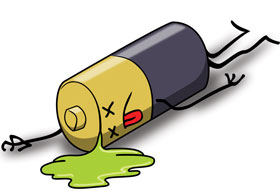

Battery charging rooms pose fire explosion risks due to the presence of hydrogen gas produced when lead-acid batteries are being charged. The hydrogen gas should be monitored so that it does not reach and exceed levels that are likely to cause an explosion. It is therefore necessary to monitor the presence of both fire and hydrogen in battery rooms.
Design
Fire detection equipment that is used in battery rooms should be intrinsically safe. The designer of the system should specify certified intrinsically safe equipment, knowing where to place the Zener/Galvanic barriers and what factors to take into consideration, depending on the size, location and quantity of batteries in the room. The designer needs to liaise with the end user about what actions needs to be initiated when hydrogen levels reach a certain threshold.
Best practice would be to have a ventilation system that will automatically open when the predetermined high levels are reached. There can also be continuous extraction and other methods of ventilation. Another option could be to stop the charging process, but this may have negative consequence and the designer will need to clarify all these points with the user as to what would be the best option.
Installation
The installer of the system must be aware of the risks and ensure that the correct working procedures are adhered to, for example, hydrogen levels are safe in the battery room before entering the area to start work. Portable hydrogen monitors should be made available to the installer when working in the room to ensure that they are continuously monitoring the level of hydrogen in the room.
Pneumatic tools are recommended because they have less risk of producing sparks which may cause an explosion. The personal protective equipment needs to be the type suitable and appropriate for intrinsically safe areas. The installer should also be aware of the high voltage and amperage that exists in the batteries, capable of causing electrocution which may be fatal. There is therefore a great need to exercise maximum caution when working in the battery room.
Intrinsically safe areas must be fitted with approved and tested intrinsically safe fire detection components. Depending on the category and risk associated with a specific room, it may be necessary to run cables in steel conduits and in some areas, steel wire armoured cables maybe specified.
The intrinsically safe barrier must be properly earthed. For addressable systems, a protocol translator is used to reduce the voltages inside the intrinsic area.
Commissioning
The commissioner of the system needs to ensure that the system is installed as per design and will work when required. Proper testing of all the devices installed must happen to ensure that each device is working as intended. Interfaces to the ventilation equipment and other services must be tested.
The commissioner will ensure that the client/ user is aware of what is installed, how it works, and what interfaces are connected to the fire system. Required documentation and drawings including test reports need to be handed to the client during training and handover. Reference should be made to SANS10139 for certificates and documentation requirements. Ongoing servicing and maintenance by approved personnel will need to be scheduled as this will help ensure that the system will continue to work properly.
We continue to encourage all end users and consultants to only use FDIA registered contractors as they have the commitment, capability and mandate to ensure that not only is your fire detection system installed correctly, but it is serviced and maintained as per the required standards and regulations.
Kindly note that the FDIA is no longer issuing membership certificates to its members due to several companies fraudulently using FDIA membership certificates. Please visit our website www.fdia.co.za to see the current and active members of the FDIA.
For comments and enquiries please contact the FDIA on [email protected]
| Email: | [email protected] |
| www: | www.fdia.co.za |
| Articles: | More information and articles about FDIA (Fire Detection Industry Association) |

© Technews Publishing (Pty) Ltd. | All Rights Reserved.